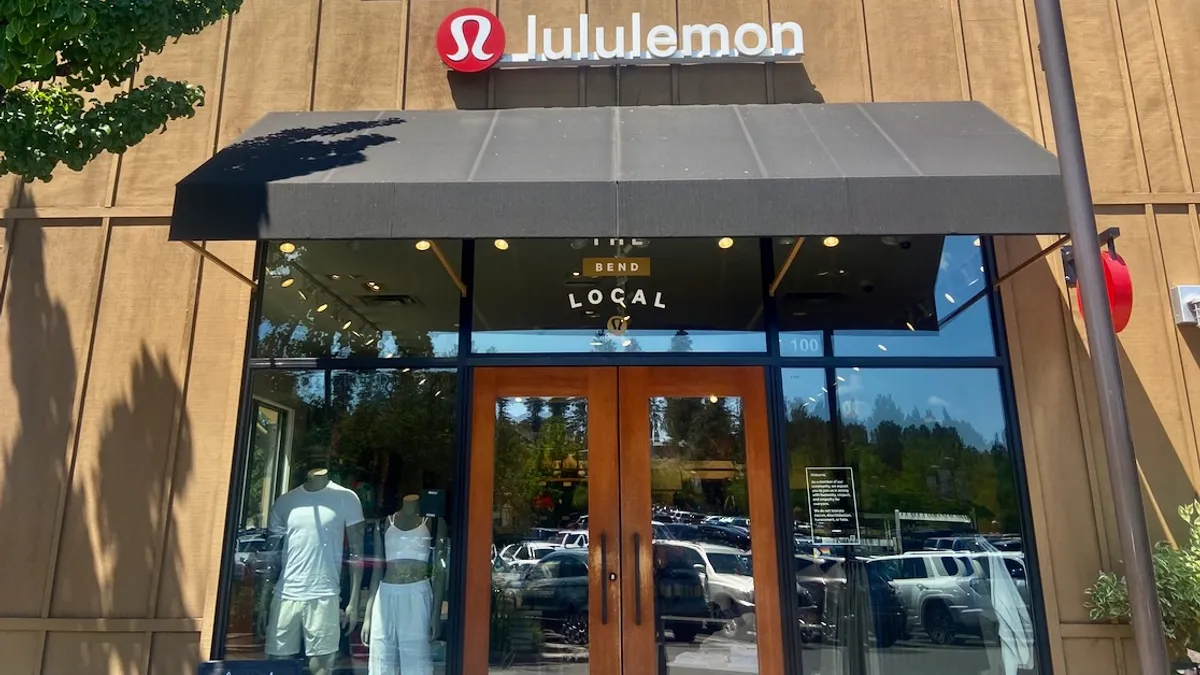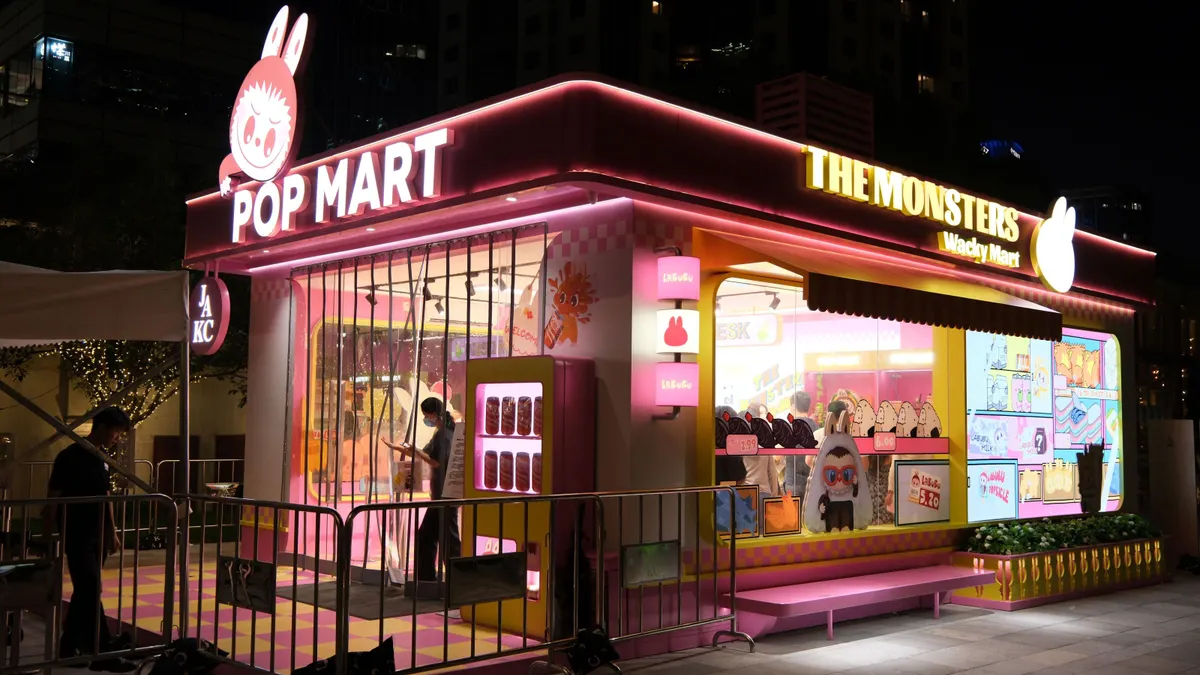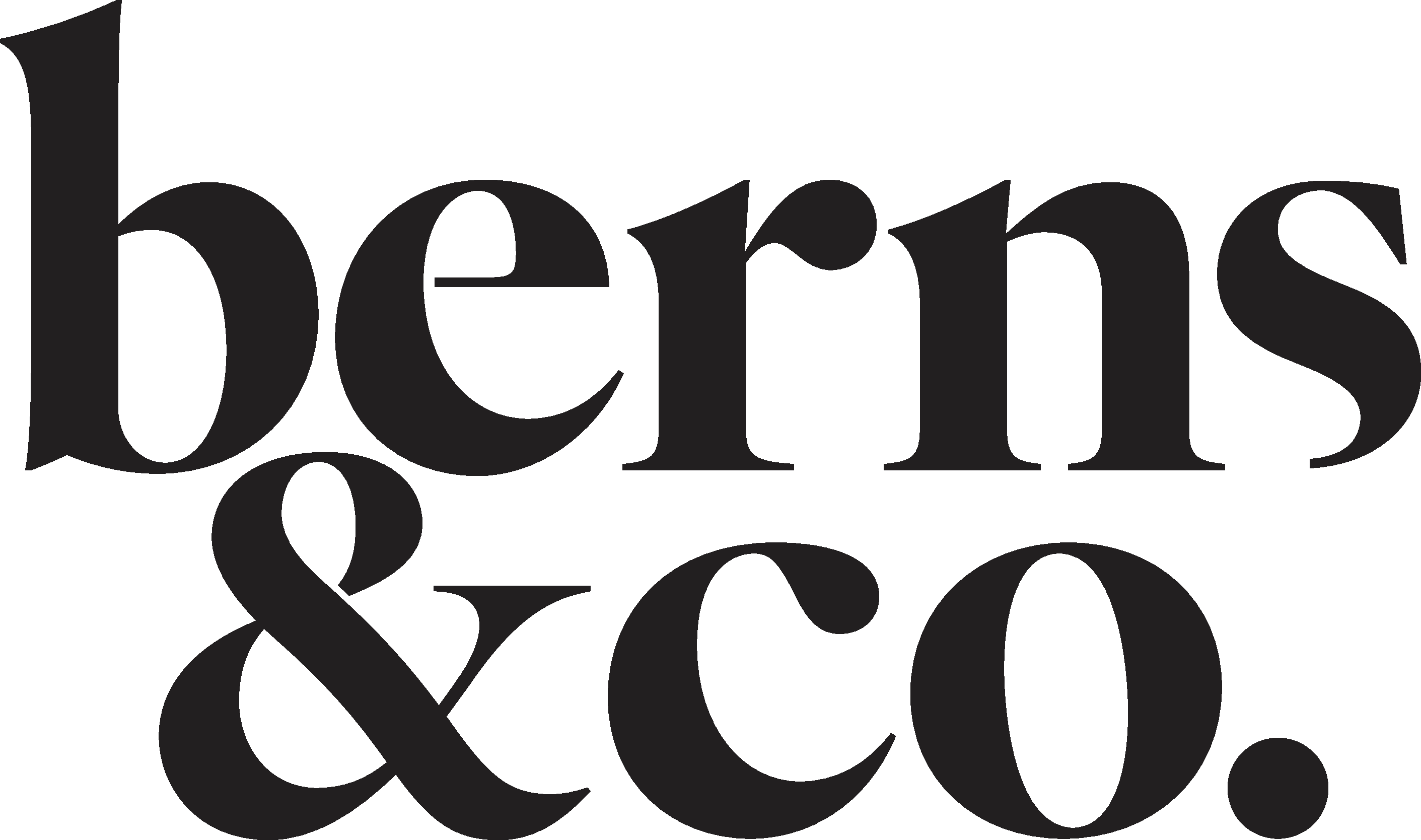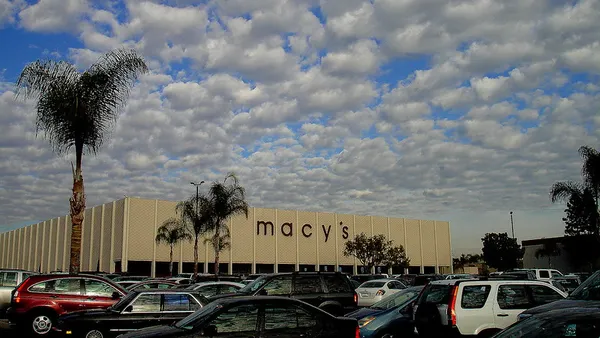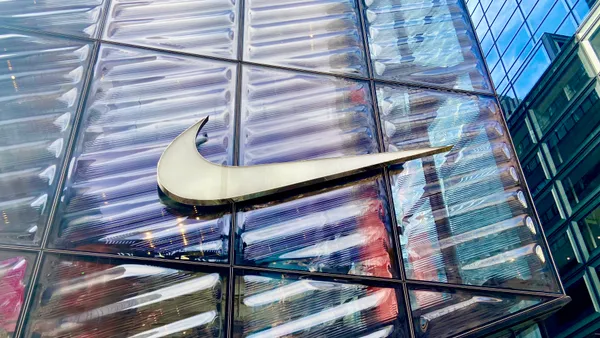Dive Brief:
- Amid efforts to recapture market share, Lululemon is increasing markdown activity at “alarming rates” alongside strategic merchandise shifts that pose a risk to earnings, according to a Wednesday research note from Jefferies analysts shared with Retail Dive.
- During recent visits to the athletic brand’s stores, Jefferies analysts observed markdowns growing into core categories and called out inconsistent pricing on identical products.
- In what the analysts viewed as a concerning approach, Lululemon appears to be moving further from its yoga-based products by emphasizing “newness” with more bold colors and logo-centered designs in an attempt to attract younger shoppers.
Dive Insight:
Lackluster store visits by Jefferies analysts come at a precarious time for Lululemon.
“It is becoming evident that the company is struggling with sell through and is resorting to markdowns to clear inventories,” Jefferies analysts said in the note. “With US sales continuing to decline, mall traffic weakening, and momentum in China fading, we see increasing risk to [management’s] topline guidance. Elevated markdown activity poses a threat to gross margins, and with costs now rising faster than sales, SG&A deleverage is set to accelerate. If current trends persist, we expect mounting pressure on earnings.”
The assessment from Jefferies comes a few weeks after Lululemon filed a lawsuit in federal court against Costco, alleging trademark infringement to create “dupes” of some of its designs.
Analysts were more intrigued by Lululemon’s direct competitors, though, calling out the potential hit to market share with stores from Vuori and Athleta nearby. Stores from these competitors seem to have more cohesive and visually appealing displays, per Jefferies. Additionally, Jefferies flagged that recent data demonstrates the brand’s peers have started outperforming Lululemon in both digital and store traffic since February.
Lululemon has remained steadfast in its focus on brick-and-mortar growth, adding 56 net new company-operated stores in 2024 and aiming to open 40 to 45 stores in 2025. Despite this, progress has stalled in the U.S. market, with its Q1 revenue and comps growth in June stemming mostly from international regions. CFO Meghan Frank said on an earnings call at the time that U.S. store traffic fell in the quarter. To help further focus on growth, the brand also revealed in June that it would lay off about 150 corporate employees at store support centers.
Additionally, the brand is raising prices starting in Q2 as it contends with the complexity of shifting tariff rates, despite the fact that CEO Calvin McDonald said U.S. shoppers are acting more price conscious.
The athletic brand’s focus on newness, which it emphasized during fourth quarter earnings results in March, is a core component for the brand’s recovery. McDonald in June said consumers were responding well to fresh product, specifically calling out its new No Line Align legging that is set to roll out to all stores by September.
But Jefferies analysts expressed skepticism about the potential for positive impact from this new design, saying that frequent store checks reveal a very limited rollout of the product.



